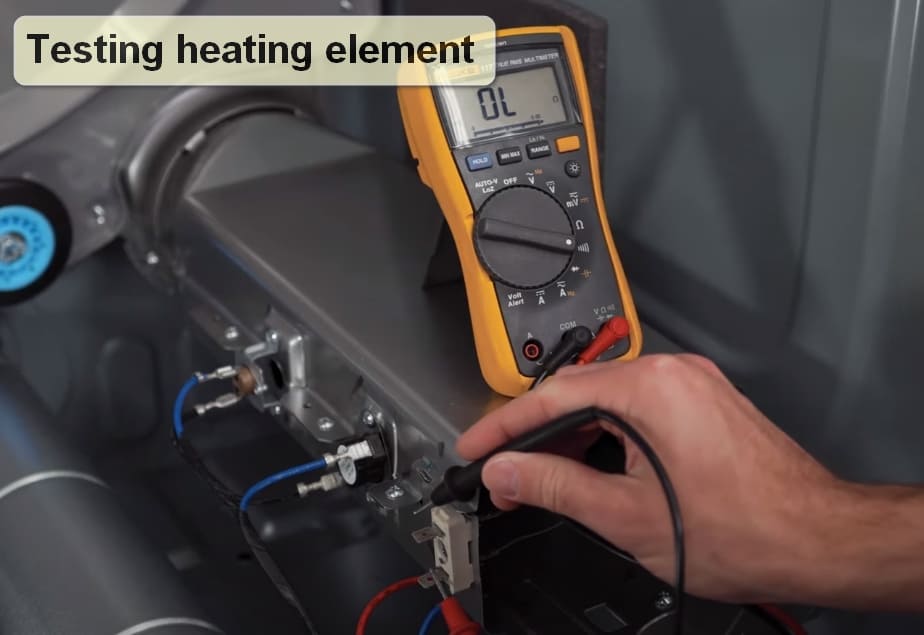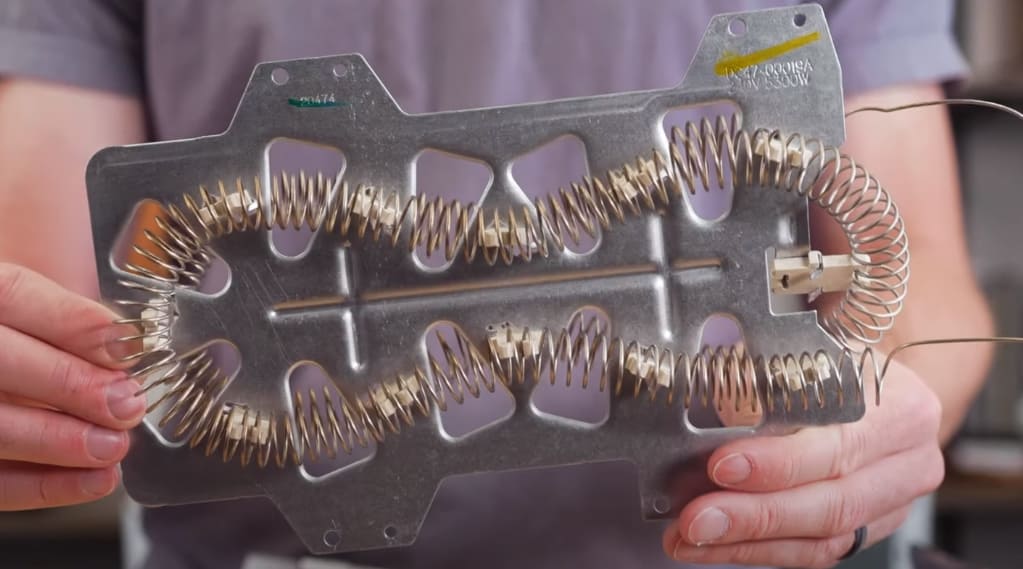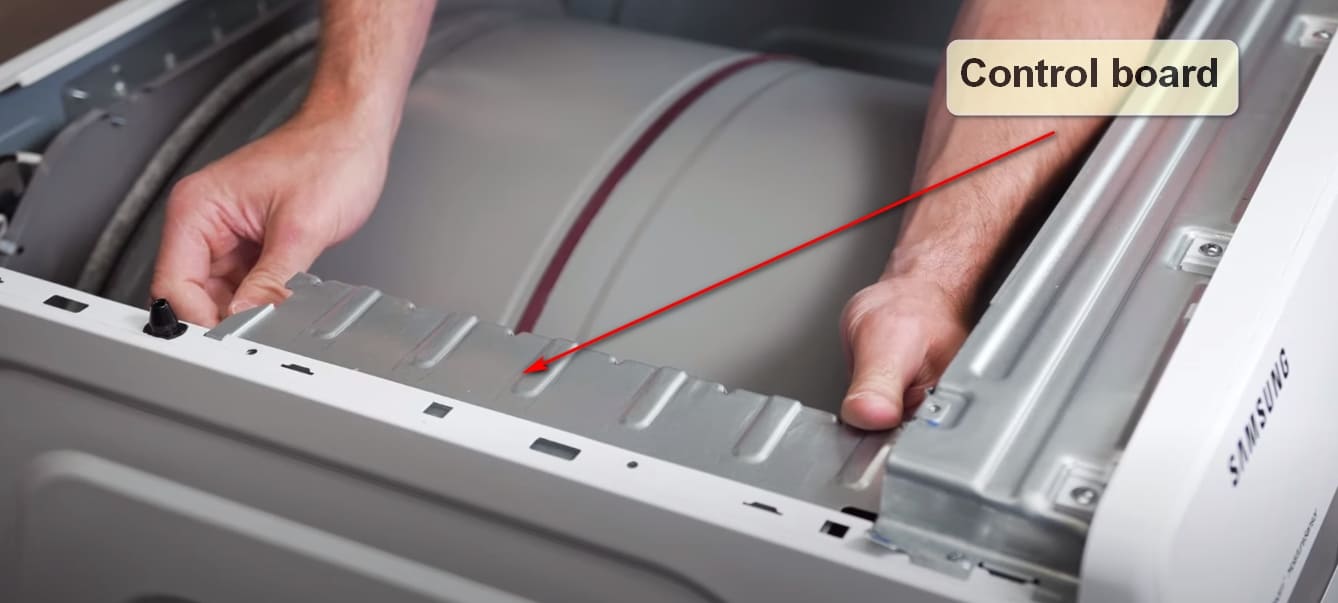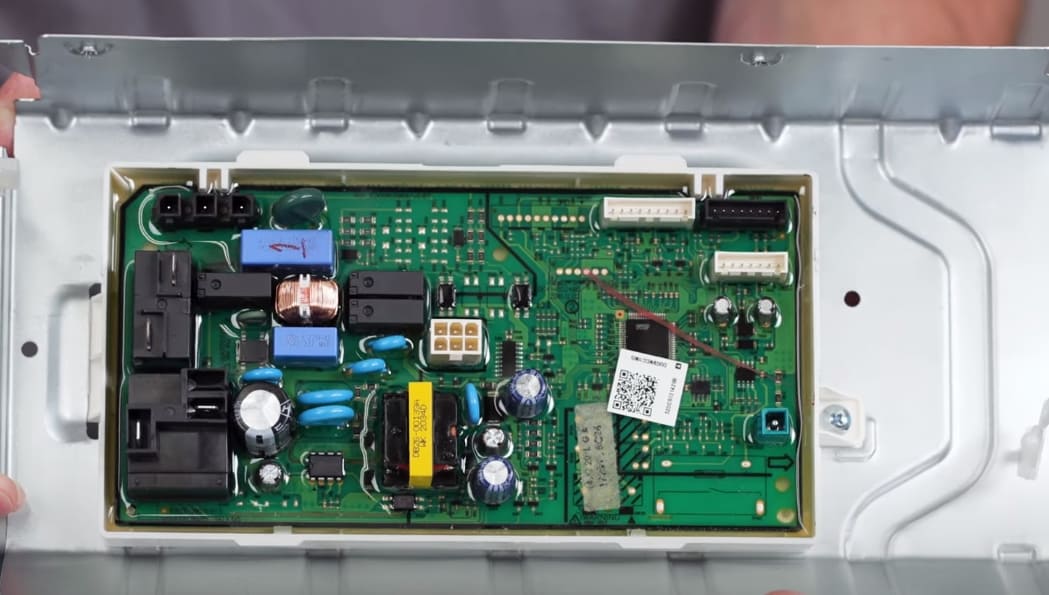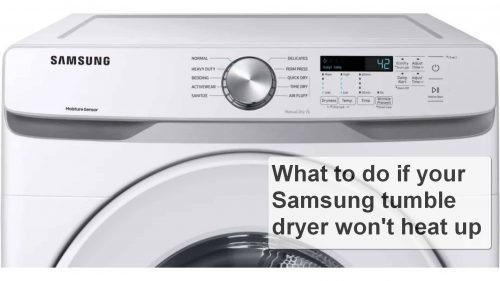
We use the tumble dryer every day. Once you load things into the Samsung car, it closes the door, but the unit does not turn on. What could be the cause of the breakdown and what to do in this case?
Experienced craftsmen know that 80% of the breakdowns of dryers were due to the combustion of the heating element, and the remaining 20% are defects in the thermostat, sensors, fuses and relays. In the article, we will consider the most common breakdowns and how to solve them.
Common problems when Samsung tumble dryer won’t heat up
Let’s take a look at the 5 most common heating element problems in Samsung tumble dryers.
Heating element burned out
The heating element in the machine is designed to generate heat for drying laundry. It heats the air to a temperature of 60-700C, which is fed into the drying chamber with the laundry by means of a fan. If the heating element is burned out, it will not work.
Check the health of the heating element using a multimeter. For measurements, the heating element is disconnected from the wires and power supply and connected to a multimeter. The working heating element shows resistance close to the calculated one. If there is 0 on the device, then the heating element has burned out and requires a complete replacement. With an indicator of 1, the heating element is most likely partially damaged, but you still have to replace it.
A burnt-out heating element can be identified without instruments, by eye. It will emit an unpleasant burning smell, and black spots will appear on its surface.
The heating element belongs to those parts that cannot be repaired if broken. For the continued safe operation of the Samsung dryer, it is better to replace the heating element completely. To do this, you can call the master at home, or do it yourself if you have experience in such work. In the latter case, it is better to use the instructions for the machine in order to properly disassemble the case and replace the faulty heating element.
Thermal fuse blown
Samsung dryers, like many other complex household devices, have special fuses that burn out from overheating and thereby protect more expensive parts, such as an electronic board, from breakage. Most often, overheating and fuse release occurs due to clogged ventilation holes.
If such a fuse blows out, further operation of the machine is impossible. Therefore, if the Samsung dryer suddenly stops heating up, then it may be a faulty thermal fuse.
To solve this problem as soon as possible, you can replace the thermal switch with a new one. To access the defective part, follow the instructions and replace it.
Important: before starting work, wait a couple of hours until the thermal switch has completely cooled down, if this is neglected, you can get burns during the repair process.
After replacing the fuse, be sure to inspect the ventilation grill and clean it of dust. If this is not done, the fuse will overheat again and burn out.
Cyclic thermostat defective
The thermostat in the Samsung dryer is necessary in order to regulate the heating of the air strictly to the set temperature. It doesn’t work all the time. The thermostat regulates heating in cycles, switching off at those moments when the air temperature has reached the calculated one.
The thermostat clearly reacts to low or high air temperature inside the unit and turns on or off in accordance with the set drying program.
With constant use of the unit, the thermostat may fail due to wear of the parts. Its serviceability is checked with a multimeter and it is decided whether repairs are needed.
In the event of a breakdown, the cyclic thermostat must be replaced. To do this, disconnect the unit from the mains, remove the rear panel of the machine and disconnect the screws holding the thermostat in the special connectors. Install a new appliance, close the back of the machine and check the operation – the machine should turn on and heat up without problems.
Control board heater relay failure
The heater relay is an important part of the control board. It regulates the work of the “brain” of the machine. The control board contains many electrical components that control various parts of the dryer. While the rest of the control board may function normally, the heater relay on the control board may be a part that has failed.
While everything else is working correctly, this faulty heater relay means the control board is not supplying power to the heater.
The technical service can help with a partial repair of the relay. But, if its complete replacement is required, then this can be done independently. To do this, use the instructions that indicate the detailed location of the control board and relay and replace it with new parts.
Wrong power supply
The Samsung dryer must be grounded to the power supply. Do not connect the unit to a network that is constantly turned off by a timer and does not work regularly. The heating element in the dryer can only operate from a stable network, when there is no likelihood of sudden surges and voltage drops. The unit must receive the full power of the current to load all the working parts. Otherwise, the machine will either not heat up or give an error in operation. Also, when connecting the machine to the network, do not use adapters or amplifiers.
FAQ
Let’s take a look at a few popular questions about heating problems with Samsung dryers.
Why did the new heating element in the dryer also burn out quickly?
This happens if there is little airflow in the dryer due to clogged ventilation holes. Remember that the machine needs regular maintenance and cleaning the air vents is a must. If the air supply to the machine is insufficient, then there is a constant overheating of important parts, they literally work for wear and tear and quickly fail.
How do I know if the heating element in my Samsung dryer is faulty?
The easiest way is to remove the heating element and visually assess its condition: if there is an unpleasant burning smell, spots on the metal surface, then most likely the heating element has burned out.
Also, using a multimeter, you can more accurately assess the state of the heating element and measure its resistance. It will be immediately clear whether the part is damaged and whether it needs to be replaced.
Is it worth changing the heating element in the dryer, or is it better to buy a new unit?
Many owners ask this question, especially if the dryer is no longer new and has served for several years. Experts recommend resorting to repairs if the cost of replacing parts will cost less than 40% of the cost of a new unit. After competent replacement of burnt parts, the car can last for more than one year – this is a significant saving for the family budget.
How much does it cost to replace a heating element in a Samsung dryer?
Repair in the service usually consists of the cost of a new heating element, diagnostics and payment for the work of the master. Sometimes it includes the cost of transportation or the departure of a specialist. Work on weekends or holidays can also be taken into account – during these periods, repairs are more expensive.
In practice, in most urban services in Russia, replacing a heating element in a Samsung drying machine at the time of this writing costs an average of $ 40. The price may depend on the model of the machine and the laboriousness of the technical manipulations of the master – there is more fuss with old units.
The heating element of the Samsung drying machine works on the following machines: DV317AEW, DV340AER, DV200EWAY, DV200EWAY, DV405ETPASU, DV431AEP, DV350AER, DV448AEW, MDE9700AYW, DV337AEL, NED7200TW, DV200EWAY, DV317AEG, DV31672
In conclusion, we can say that the replacement of the heating element can be done by hand if you have experience with household appliances. But it is better to turn to specialists who will carry out repairs faster and better, with a guarantee.

